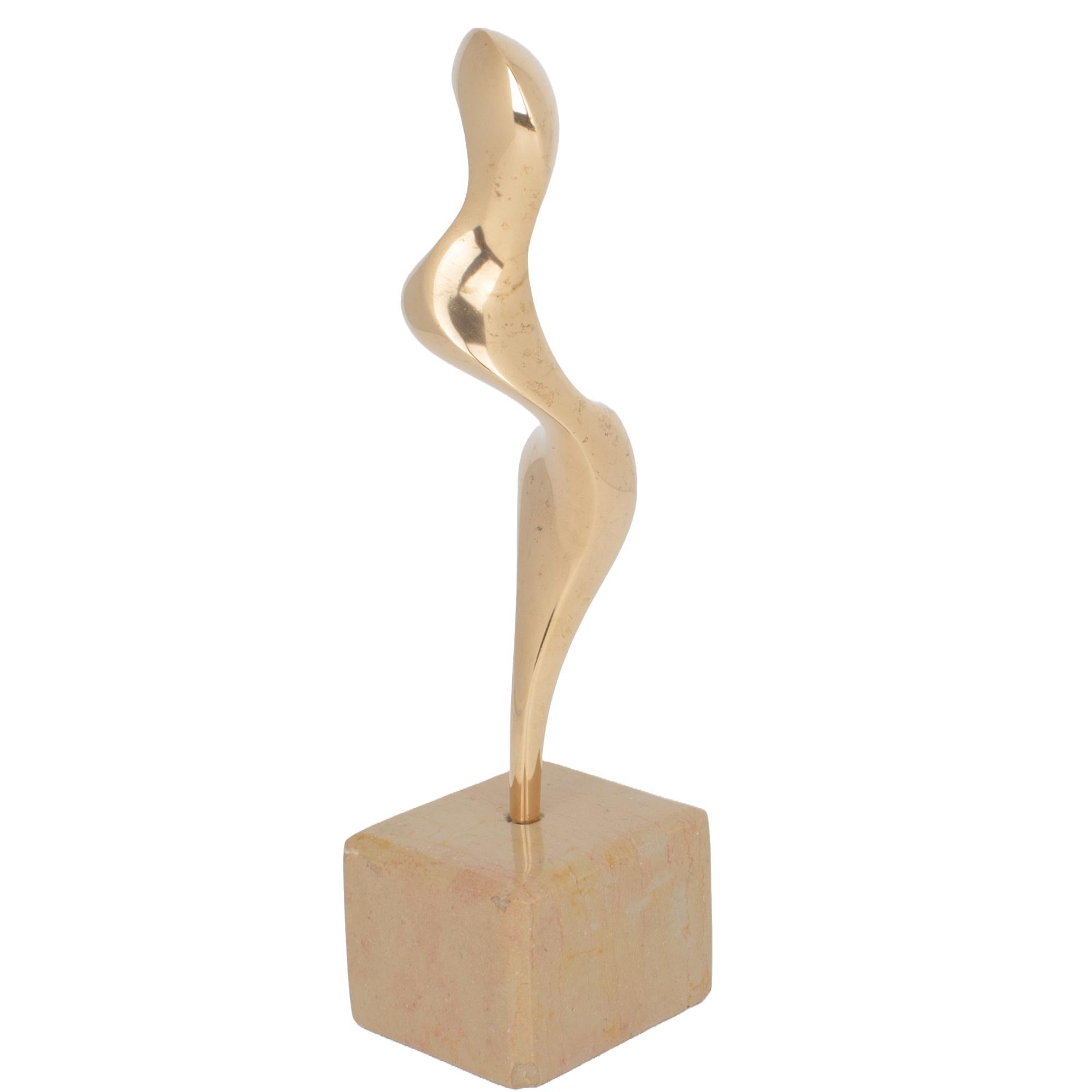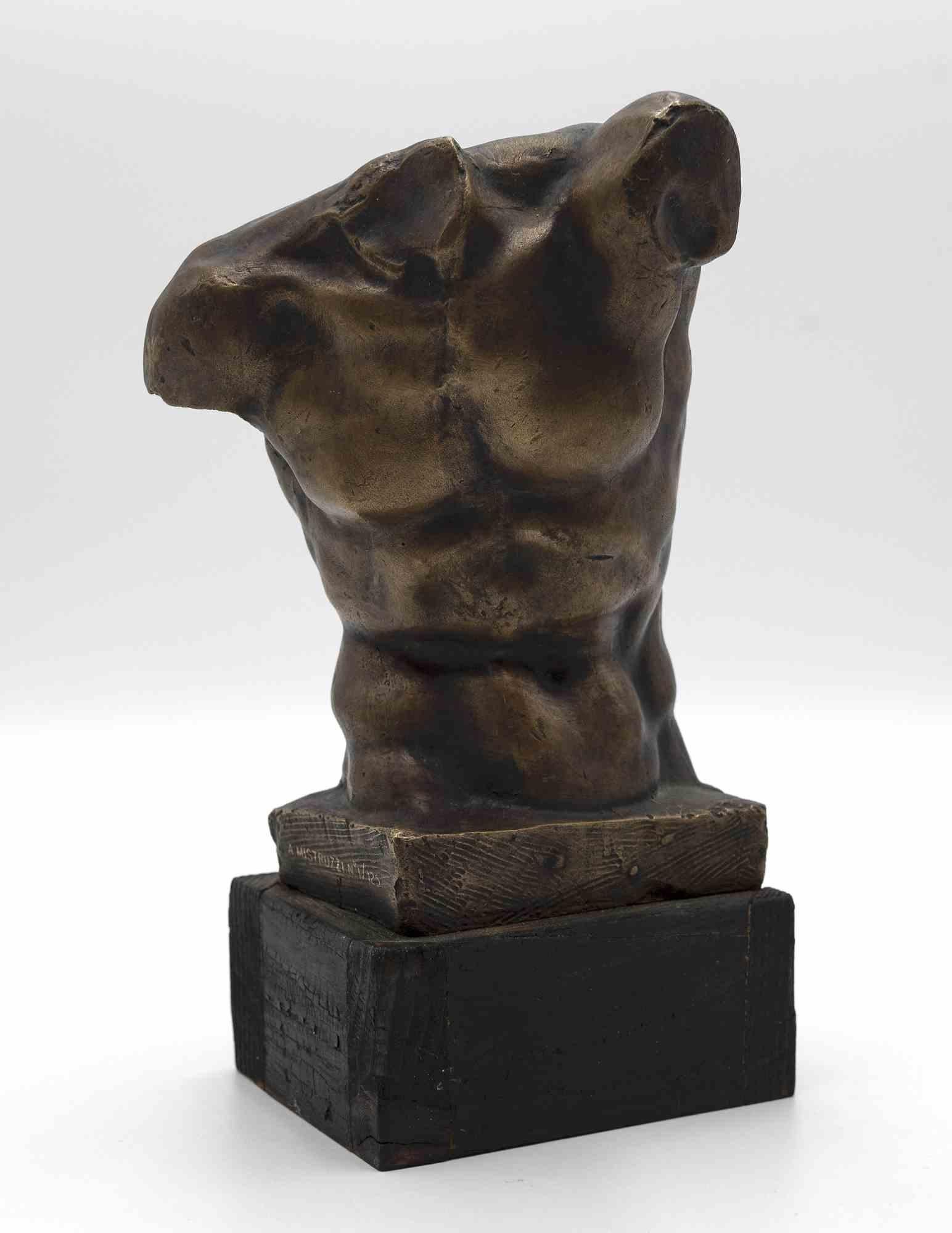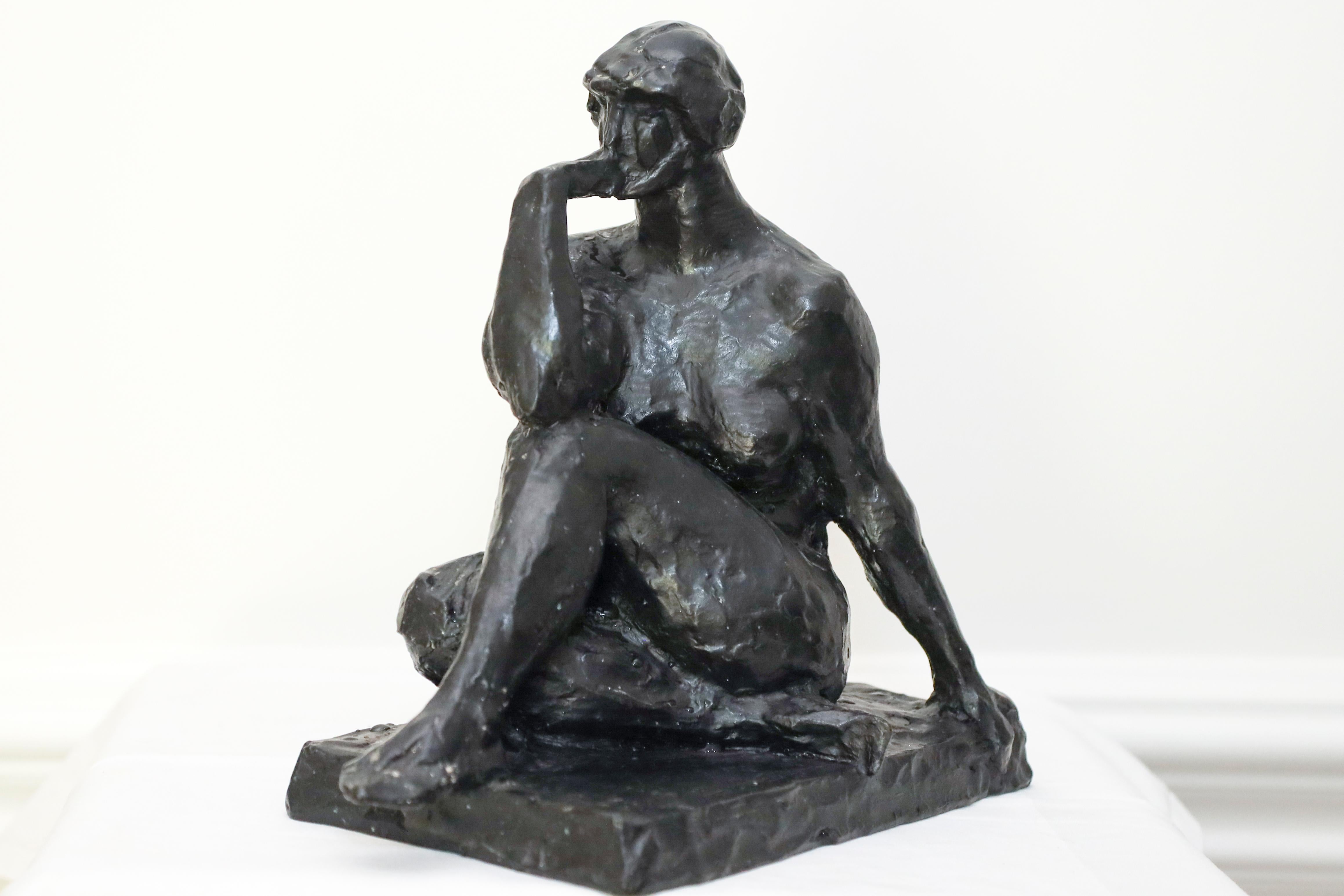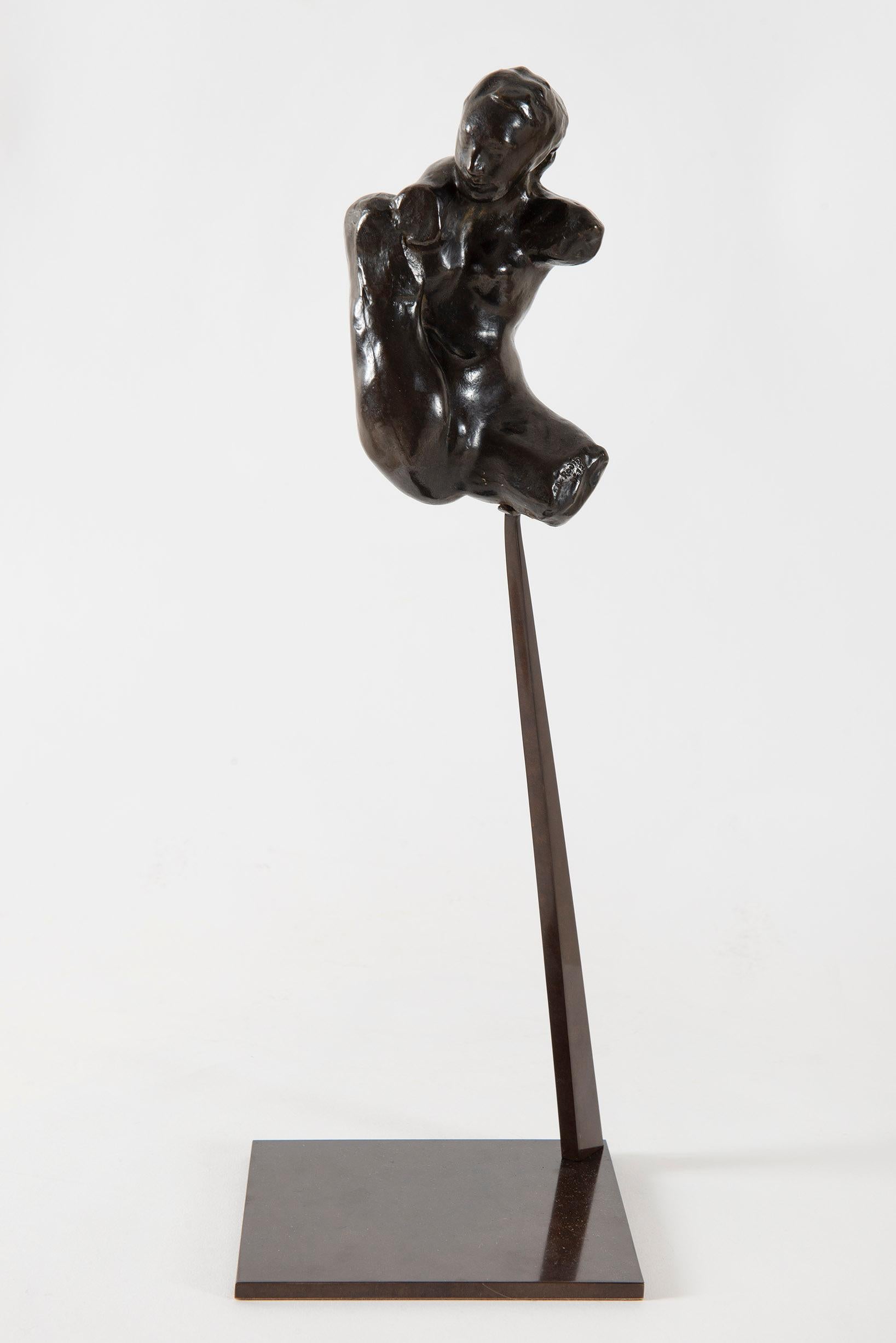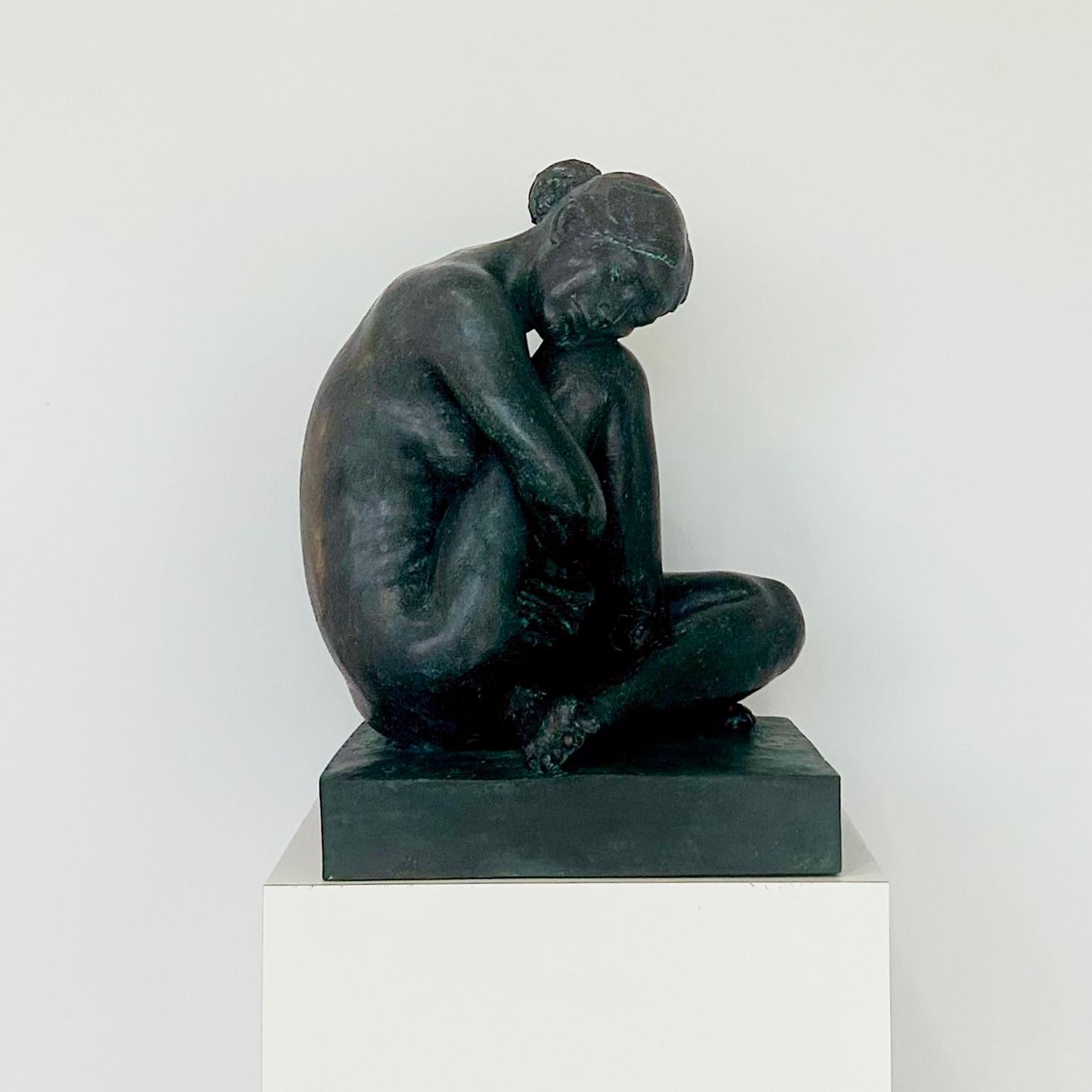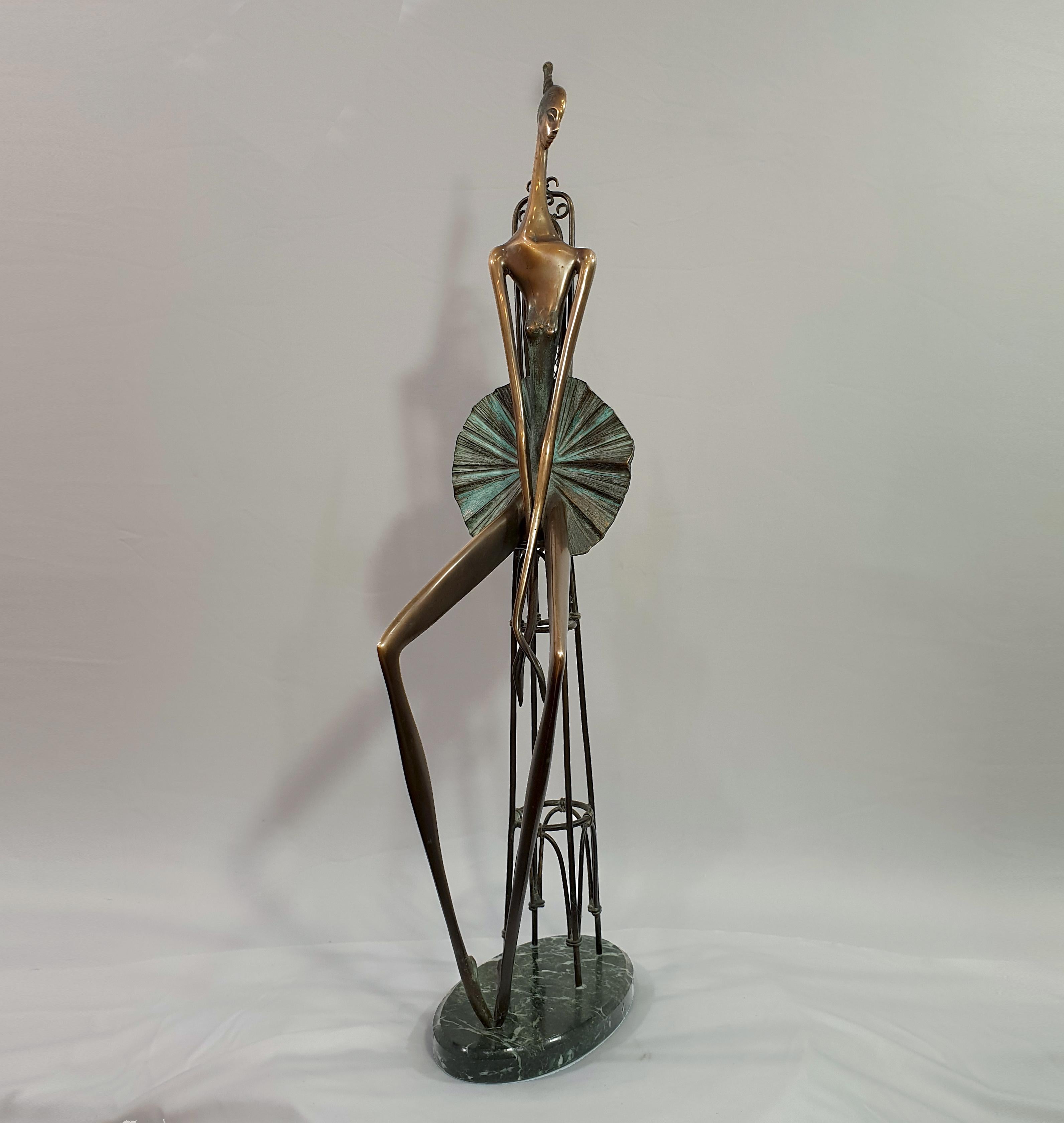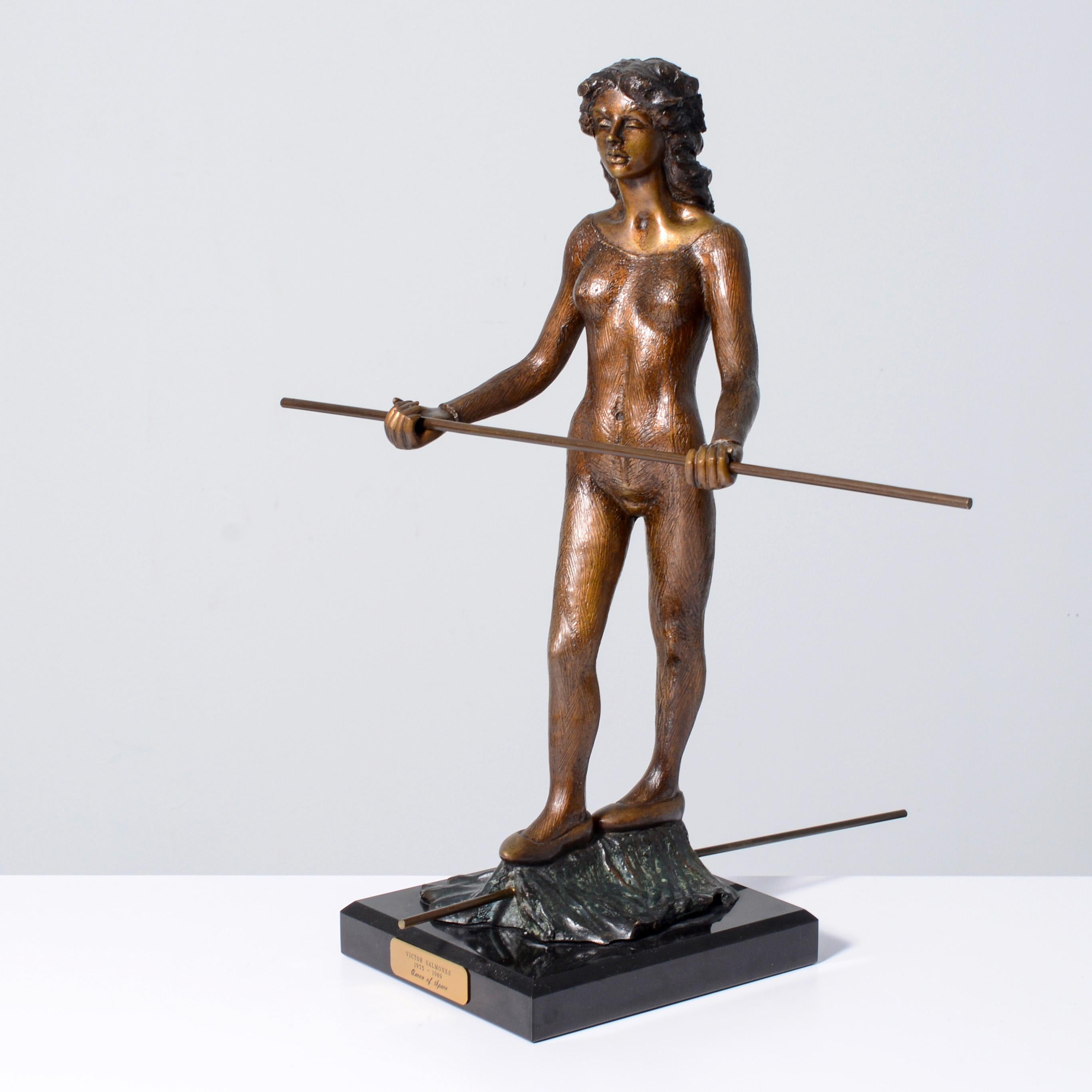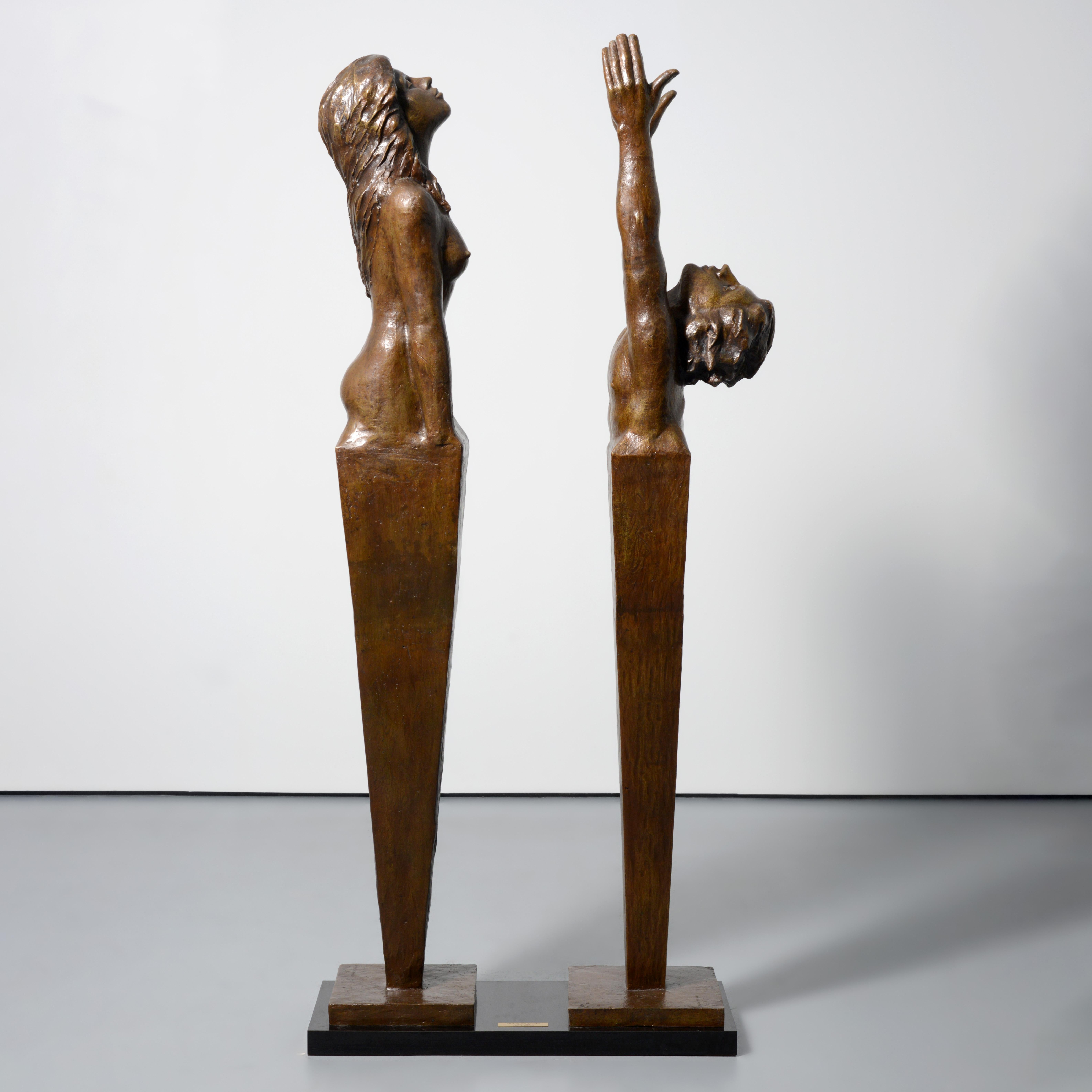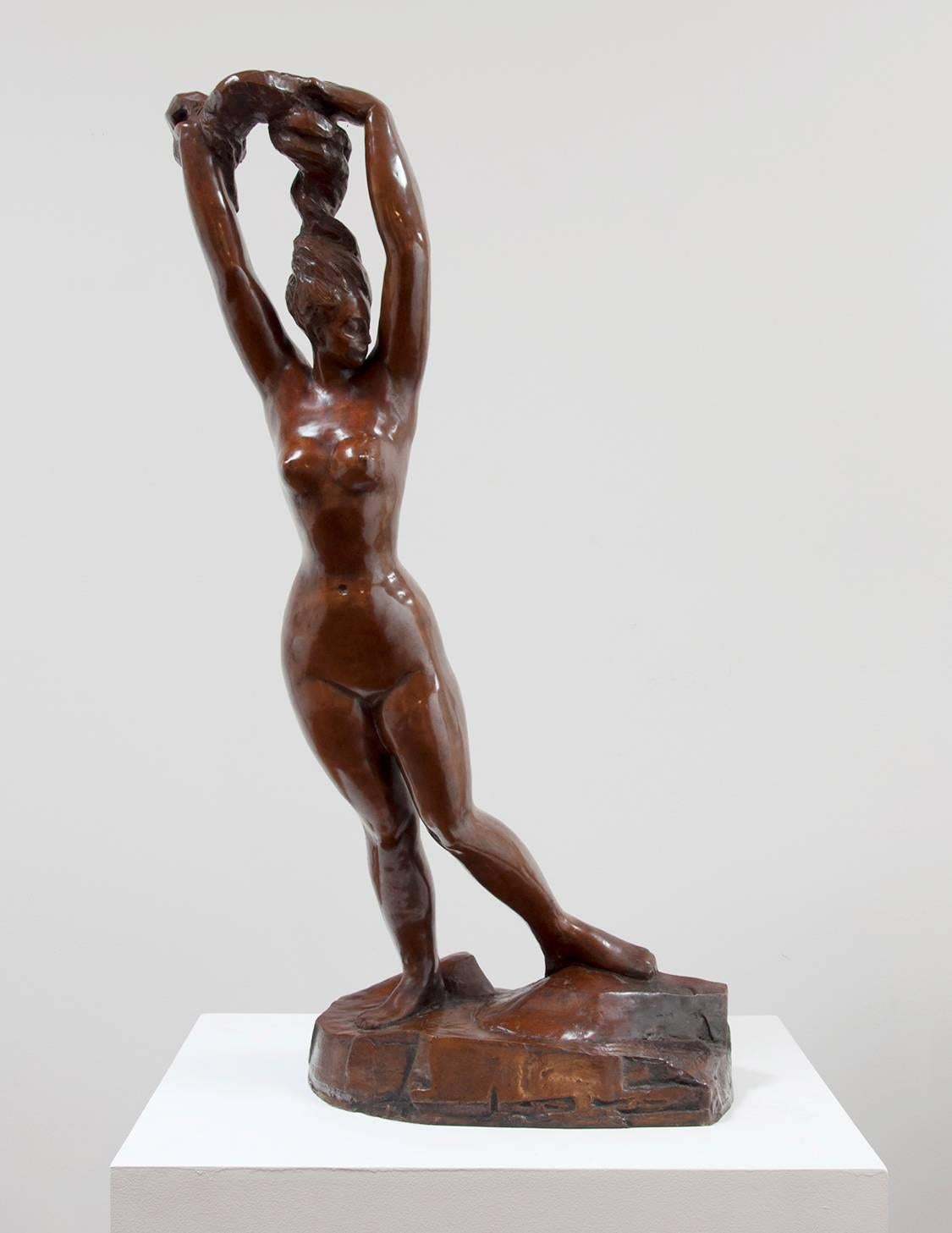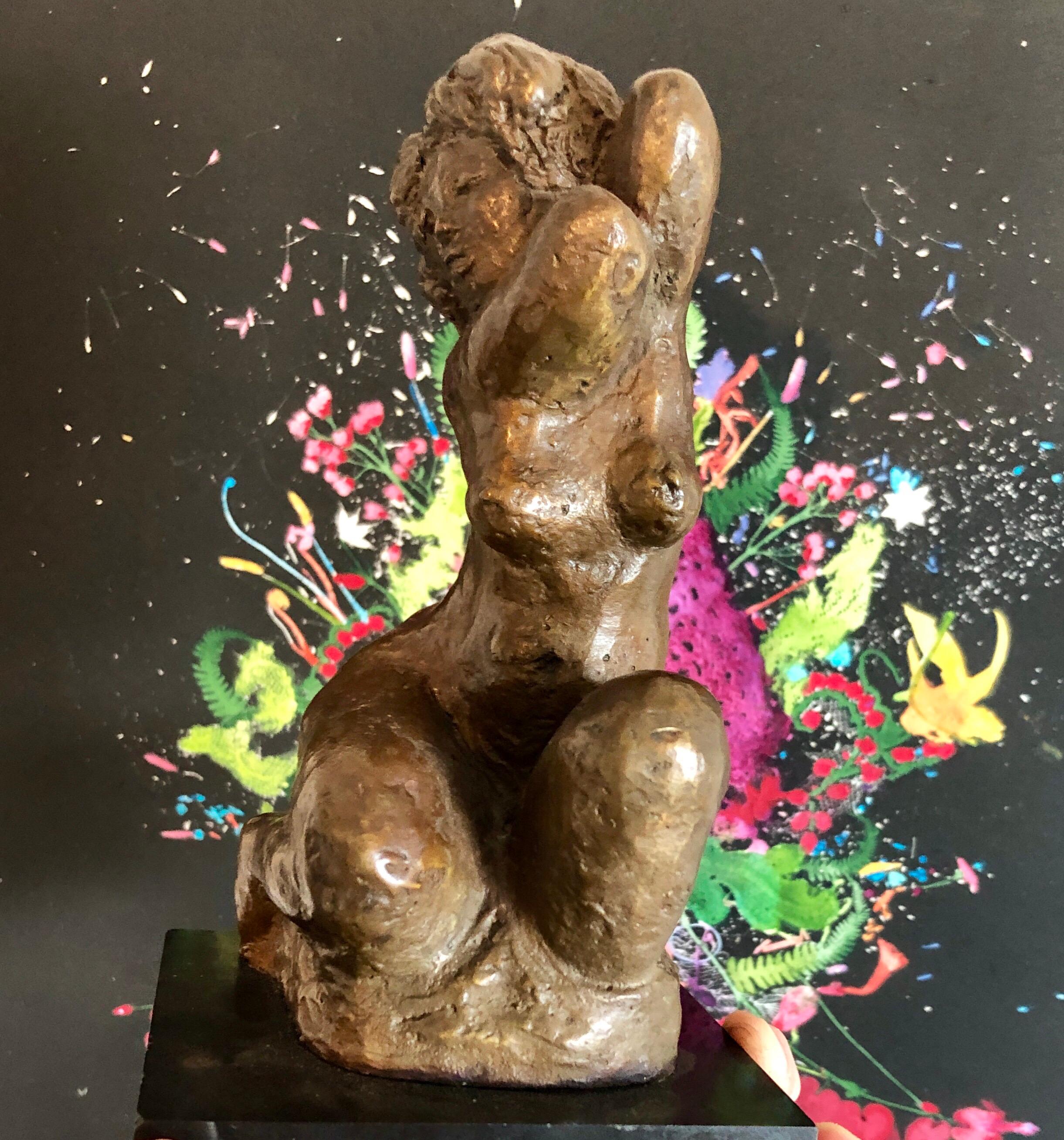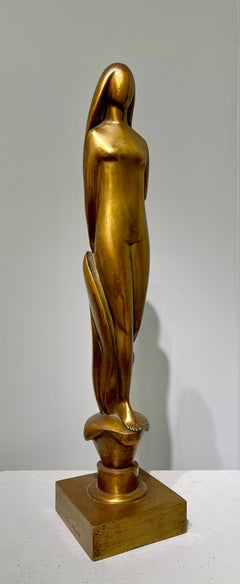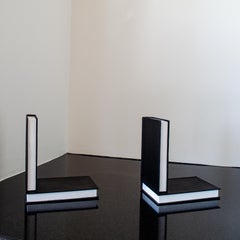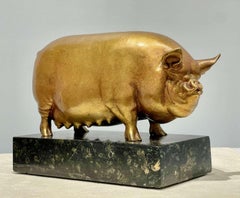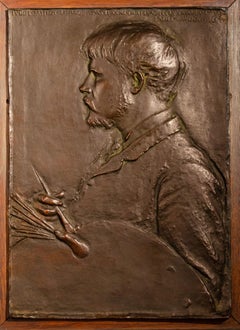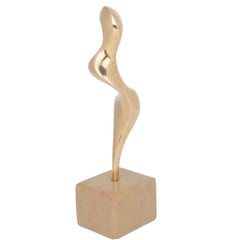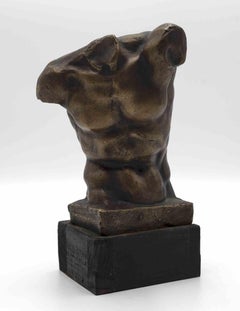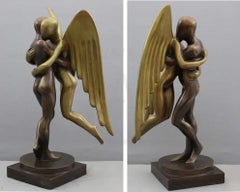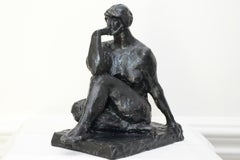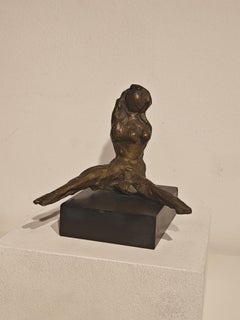
"Seated Nude" Reg Butler, Assistant to Henry Moore Female Nude Sculpture
View Similar Items
Want more images or videos?
Request additional images or videos from the seller
1 of 6
Reg Butler"Seated Nude" Reg Butler, Assistant to Henry Moore Female Nude Sculpturecirca 1960s
circa 1960s
$4,750List Price
About the Item
- Creator:Reg Butler (1913 - 1981)
- Creation Year:circa 1960s
- Dimensions:Height: 3.5 in (8.89 cm)Width: 4.5 in (11.43 cm)Depth: 4.5 in (11.43 cm)
- Medium:
- Movement & Style:
- Period:
- Condition:
- Gallery Location:New York, NY
- Reference Number:1stDibs: LU1841215542452
About the Seller
5.0
Platinum Seller
Premium sellers with a 4.7+ rating and 24-hour response times
Established in 2022
1stDibs seller since 2022
115 sales on 1stDibs
Authenticity Guarantee
In the unlikely event there’s an issue with an item’s authenticity, contact us within 1 year for a full refund. DetailsMoney-Back Guarantee
If your item is not as described, is damaged in transit, or does not arrive, contact us within 7 days for a full refund. Details24-Hour Cancellation
You have a 24-hour grace period in which to reconsider your purchase, with no questions asked.Vetted Professional Sellers
Our world-class sellers must adhere to strict standards for service and quality, maintaining the integrity of our listings.Price-Match Guarantee
If you find that a seller listed the same item for a lower price elsewhere, we’ll match it.Trusted Global Delivery
Our best-in-class carrier network provides specialized shipping options worldwide, including custom delivery.More From This Seller
View All"Young Woman Nude" Warren Wheelock, Art Deco, Modernist Female Sculpture Form
By Warren Wheelock
Located in New York, NY
Warren Wheelock
Untitled (Young Woman Nude), 1924
Incised signature and date to edge of base "© 1924 by Warren Wheelock"
Bronze
Sculpture: 20 h × 4½ w...
Category
1920s Art Deco Figurative Sculptures
Materials
Bronze
"Untitled (Bookends)" Steven Wolfe, Illusionistic Book Sculpture, Trompe-l'oeil
Located in New York, NY
Steven Wolfe
Untitled (Bookends), 1990
Stamped: SW 1990 2/3
Painted Bronze
6 1/4 x 7 x 4 inches
Edition 2/3
Steven Wolfe crafted sculptures and drawings of remarkable skill and vis...
Category
1990s Contemporary Figurative Sculptures
Materials
Bronze
"Middle White Sow (Wharfedale Royal Lady)" Herbert Haseltine, Pig, Farm Animal
Located in New York, NY
Herbert Haseltine
Middle White Sow (Wharfedale Royal Lady), 1925
Polished bronze with opaque ochre patina
4 ⅛ x 8 ⅛ x 3 ⅝ inches
Period speckled Belgian marble base: 1 ½ x 7 x 3 inch...
Category
1920s Realist Figurative Sculptures
Materials
Bronze
"Jules Bastien LePage" Augustus Saint-Gaudens, Bas Relief of French Painter
By Augustus Saint-Gaudens
Located in New York, NY
Augustus Saint-Gaudens
Jules Bastien LePage
Bronze
14 1/4 x 10 1/8 inches
Augustus Saint-Gaudens was born in 1848 in Dublin, Ireland. His father, Bern...
Category
1880s Realist Figurative Sculptures
Materials
Bronze
"Reclining Woman" Karl Bitter, Reclining Woman with Reddish Patina
Located in New York, NY
Karl Bitter
Reclining Woman, 1897
Signed: Bitter 97
Stamped: GORHAM M F G CO.
Bronze
10.25 x 10.25 x 4 inches
Initially from Vienna, Karl Bitter first studied art at the city’s Kunstgewerbeschule and the Kunstakademie before being drafted into the Austrian army. He deserted his position in the military while on leave, and departed for New York City where he would discover considerable success. Early on, he won a competition for the Astor memorial bronze gates at Trinity Church, which awarded him enough capital to open his own studio. He went on to execute sculptures of Alexander Hamilton and Thomas Jefferson at the Cuyahoga Courthouse in Cleveland; he also created portraits of Jefferson for the state of Missouri and the University of Virginia. These commissions caught the attention of sculptor Richard Morris Hunt (who famously designed the façade of the Metropolitan Museum), earning Bitter the duty of producing the portrait medallions that now appear near the top of the museum’s grand face.
Notably, he presented at Chicago’s 1893 World’s Columbian Exposition and directed the Pan-American Exposition in Buffalo in 1901. Over his career, his artwork became more flexible – his early academy training is easily identifiable within his work, but after moving to America, conventions of Modernism became more prevalent within his sculpture. In addition to many awards, Bitter presided over the National Sculpture Society in 1906-1907, and was a member of the National Institute of Arts and Sciences, the National Academy of Design, the American Academy of Arts and Letters, the Architectural League, and the Art Commission, New York. His public work can be found at the Biltmore Estate, Asheville, NC; Gettysburg National Military Park, Gettysburg, PA; Wisconsin State Capitol, Madison, WI; United States Naval Academy...
Category
1890s Realist Figurative Sculptures
Materials
Bronze
"Dancer" David Hare, Male Nude, Figurative Sculpture, Mid-Century Surrealist
By David Hare
Located in New York, NY
David Hare
Dancer, circa 1955
Bronze with integral stand
68 high x 17 wide x 13 1/2 deep inches
“Freedom is what we want,” David Hare boldly stated in 1965, but then he added the caveat, “and what we are most afraid of.” No one could accuse David Hare of possessing such fear. Blithely unconcerned with the critics’ judgments, Hare flitted through most of the major art developments of the mid-twentieth century in the United States. He changed mediums several times; just when his fame as a sculptor had reached its apogee about 1960, he switched over to painting. Yet he remained attached to surrealism long after it had fallen out of official favor. “I can’t change what I do in order to fit what would make me popular,” he said. “Not because of moral reasons, but just because I can’t do it; I’m not interested in it.”
Hare was born in New York City in 1917; his family was both wealthy and familiar with the world of modern art. Meredith (1870-1932), his father, was a prominent corporate attorney. His mother, Elizabeth Sage Goodwin (1878-1948) was an art collector, a financial backer of the 1913 Armory Show, and a friend of artists such as Constantin Brancusi, Walt Kuhn, and Marcel Duchamp.
In the 1920s, the entire family moved to Santa Fe, New Mexico and later to Colorado Springs, in the hope that the change in altitude and climate would help to heal Meredith’s tuberculosis. In Colorado Springs, Elizabeth founded the Fountain Valley School where David attended high school after his father died in 1932. In the western United States, Hare developed a fascination for kachina dolls and other aspects of Native American culture that would become a recurring source of inspiration in his career.
After high school, Hare briefly attended Bard College (1936-37) in Annandale-on-Hudson. At a loss as to what to do next, he parlayed his mother’s contacts into opening a commercial photography studio and began dabbling in color photography, still a rarity at the time [Kodachrome was introduced in 1935]. At age 22, Hare had his first solo exhibition at Walker Gallery in New York City; his 30 color photographs included one of President Franklin Roosevelt.
As a photographer, Hare experimented with an automatist technique called “heatage” (or “melted negatives”) in which he heated the negative in order to distort the image. Hare described them as “antagonisms of matter.” The final products were usually abstractions tending towards surrealism and similar to processes used by Man Ray, Raoul Ubac, and Wolfgang Paalen.
In 1940, Hare moved to Roxbury, CT, where he fraternized with neighboring artists such as Alexander Calder and Arshile Gorky, as well as Yves Tanguy who was married to Hare’s cousin Kay Sage, and the art dealer Julian Levy. The same year, Hare received a commission from the American Museum of Natural History to document the Pueblo Indians. He traveled to Santa Fe and, for several months, he took portrait photographs of members of the Hopi, Navajo, and Zuni tribes that were published in book form in 1941.
World War II turned Hare’s life upside down. He became a conduit in the exchange of artistic and intellectual ideas between U.S. artists and the surrealist émigrés fleeing Europe. In 1942, Hare befriended Andre Breton, the principal theorist of surrealism. When Breton wanted to publish a magazine to promote the movement in the United States, he could not serve as an editor because he was a foreign national. Instead, Breton selected Hare to edit the journal, entitled VVV [shorth for “Victory, Victory, Victory”], which ran for four issues (the second and third issues were printed as a single volume) from June 1942 to February 1944. Each edition of VVV focused on “poetry, plastic arts, anthropology, sociology, (and) psychology,” and was extensively illustrated by surrealist artists including Giorgio de Chirico, Roberto Matta, and Yves Tanguy; Max Ernst and Marcel Duchamp served as editorial advisors.
At the suggestion of Jacqueline Lamba...
Category
1950s Abstract Figurative Sculptures
Materials
Bronze
$20,000 Sale Price
20% Off
You May Also Like
Roland Masson Abstract Organic Bronze and Marble Sculpture, circa 1990
Located in Atlanta, GA
Discover a striking work of art by acclaimed French sculptor Roland Masson: a rare, limited-edition abstract bronze sculpture of extraordinary beauty and elegance.
Meticulously cast ...
Category
1990s Modern Figurative Sculptures
Materials
Bronze
Bust of a Man - Sculpture after Aurelio Mistruzzi - 1990s
Located in Roma, IT
Bust of a man is an original sculpture in bronze realized after Aurelio Mistruzzi in the late 1990s.
Bronze casting.
18 cm height, 24 cm height with wooden base.
Good conditions.
Category
1990s Modern Figurative Sculptures
Materials
Bronze
Mark Kostabi - Divine Embrace - Bronze Sculpture
By Mark Kostabi
Located in Winterswijk, NL
Mark Kostabi - Divine Embrace - Bronze sculpture
Divine Embrace is a unique bronze sculpture by renowned artist Mark Kostabi, featuring two faceless figures in an intimate embrace...
Category
21st Century and Contemporary American Modern Figurative Sculptures
Materials
Bronze
Woman Seated A Bronze Sculpture of a Woman by Charles Rumsey
By Charles Cary Rumsey
Located in Brookville, NY
The bronze sculpture of a woman by Charles Rumsey is undated, but was created at a point in his career where he began to transition from realism to more modern, looser depictions of ...
Category
1920s American Modern Figurative Sculptures
Materials
Bronze
Iris little study, Auguste Rodin, Bronze, Sculpture, Modern Art, 1970's, Nudes
By Auguste Rodin
Located in Geneva, CH
Iris little study, Auguste Rodin, Bronze, Sculpture, Modern Art, 1970's, Nudes
Petite etude pour Iris, douzième épreuve
Ed. 12/12 pcs
1973
Bronze with brown and black patina
Marked around the left thigh : A.Rodin n°12 c by Musée RODIN...
Category
1970s Modern Figurative Sculptures
Materials
Bronze
"Untitled" bronze sculpture of seated female figure by artist Felipe Castañeda
By Felipe Castañeda
Located in Boca Raton, FL
"Untitled" bronze sculpture of a female nude by artist Felipe Castañeda. Inscribed F. Castañeda 1984 P/A on base.
Category
1980s Modern Figurative Sculptures
Materials
Bronze
Recently Viewed
View AllMore Ways To Browse
Ruslan Karablin
Sacred Langur
Salvador Dali Bas Relief Silver
Sergei Isupov
Sydney Kumalo
Tayeba Lipi
Trois Sardines
Verdigris Wall Sculpture
Vincent Glinsky Sculpture
Vincent Glinsky
Virgen De La Caridad Del Cobre
Walt Horton Bronze
Wendy Saxon Brown
Wesley Fleming
Willem Degroot
William Debilzan
Wladimiro Politano
Alexis Silk Glass
